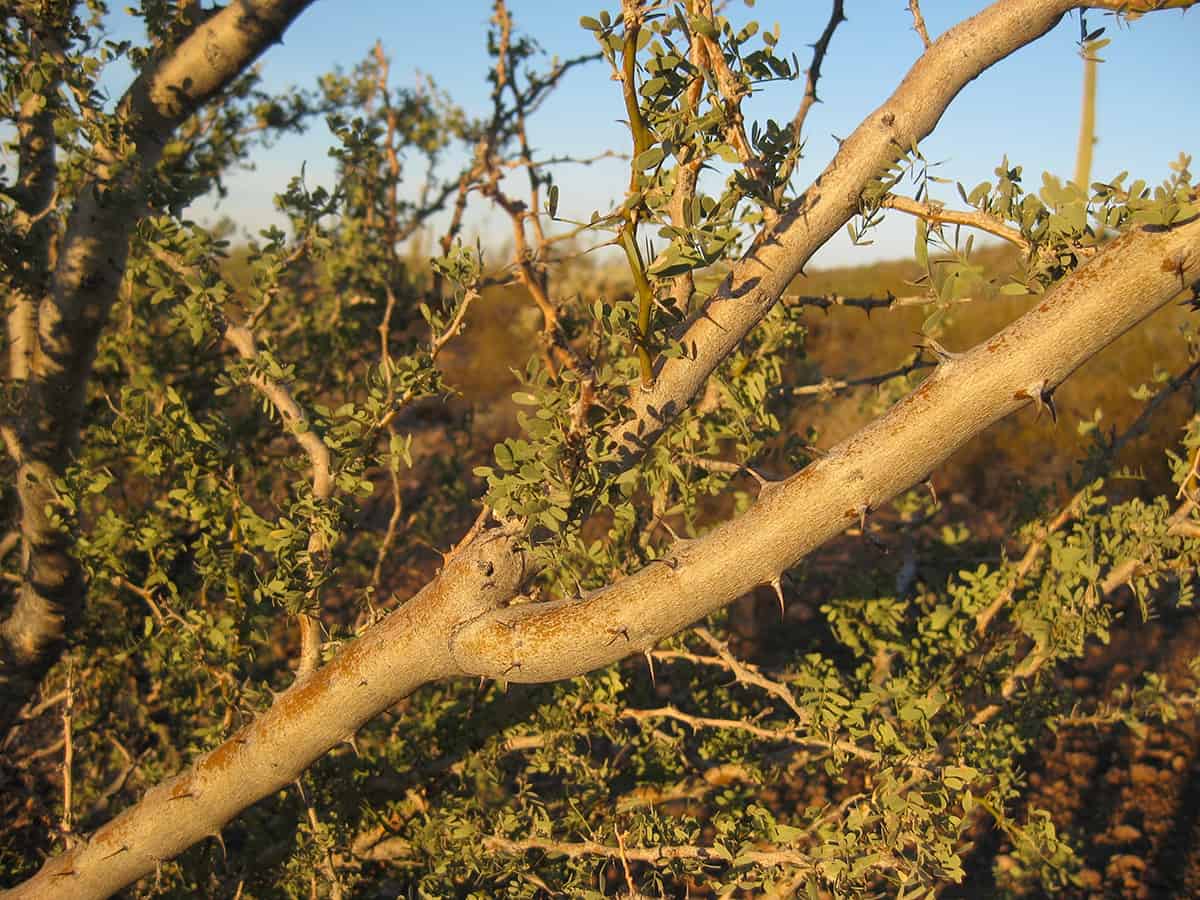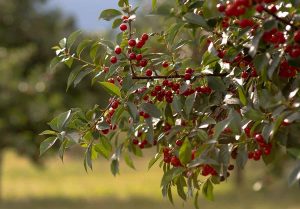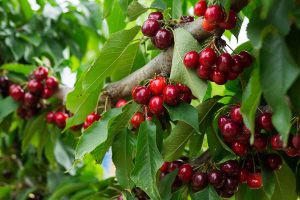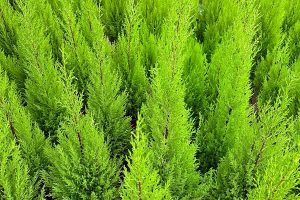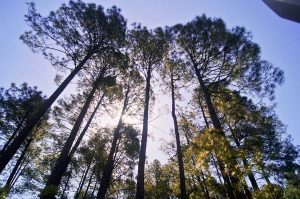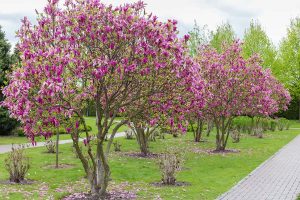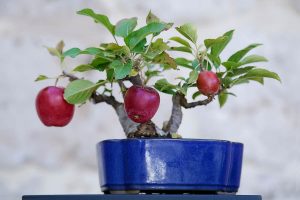Thorny trees are a unique group of plants that come in various types and species. These trees have evolved to grow sharp, defensive structures to protect themselves from herbivores and other threats.
In identifying trees with thorns, you need to observe not only the presence of thorns but also the tree’s growth habits, leaves, and flowers. Keep in mind that thorny trees are often found in diverse environments, including tropical, subtropical, and temperate areas. Many of these trees also have practical uses, such as landscaping or cultural significance in various communities. This article will help you identify trees with thorns and explore a variety of trees with thorns.
Table of Contents
Defining Characteristics of Trees with Thorns
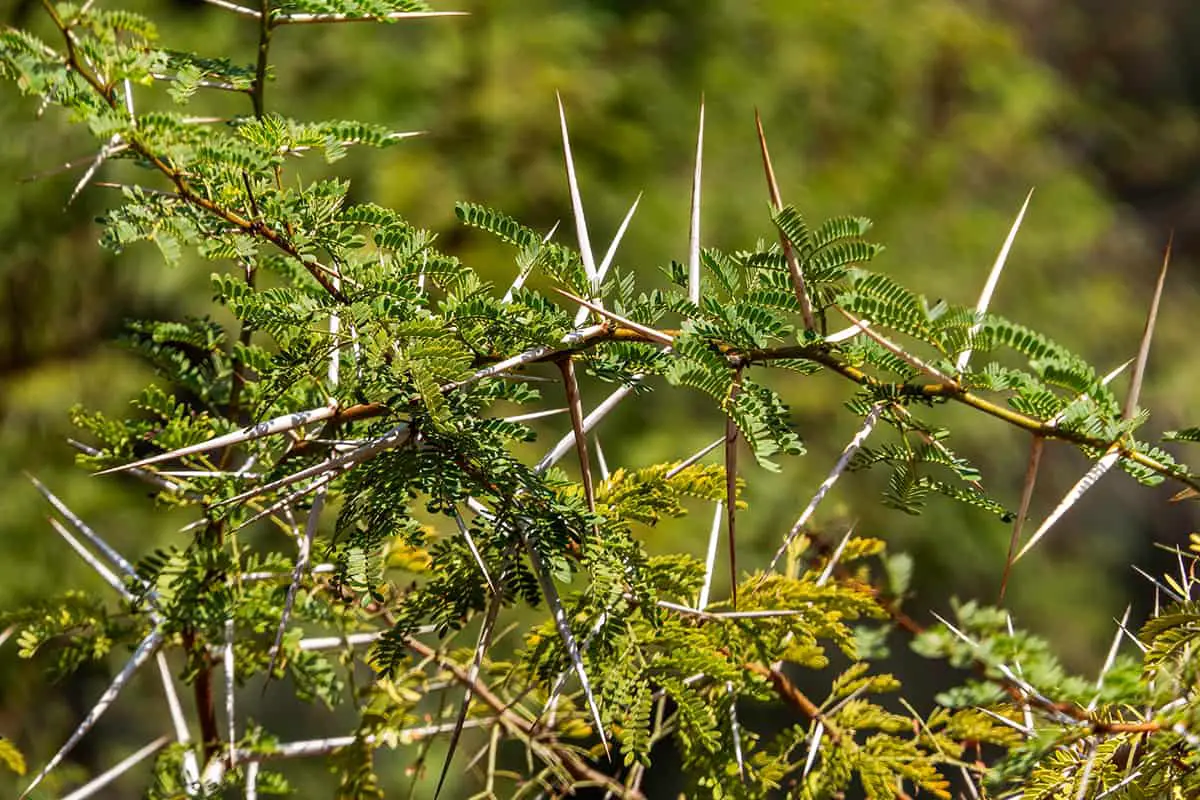
Trees with thorns have distinct features that set them apart from other trees. Thorns are sharp, modified branches or stems that serve as a mechanical defense against herbivores. You can easily identify trees with thorns by looking for these key characteristics:
- Sharp thorns: Thorns may vary in length and density but are always sharp.
- Unique shape: Most trees with thorns have distinctive shapes, often with broad crowns and twisting branches.
- Diverse species: Thorny trees belong to different species, such as Acacia or Hawthorn trees.
The length and density of thorns can vary among trees and even within a single tree. Some trees produce longer thorns as a response to browsing by herbivores, while others have more uniform thorn lengths. Thorn density may differ among different species of trees, such as Acacia trees.
Aside from their thorns, trees with thorns have unique shapes that make them easily recognizable. For instance, many thorny trees have broad crowns and twisting branches that give them a striking appearance. These tree shapes enhance their defense mechanisms by making it more difficult for herbivores to access their foliage.
Lastly, trees with thorns come from diverse species, which allows them to adapt to various environments.
Let’s go over some common tree species with thorns here.
Hawthorns
Washington Hawthorn
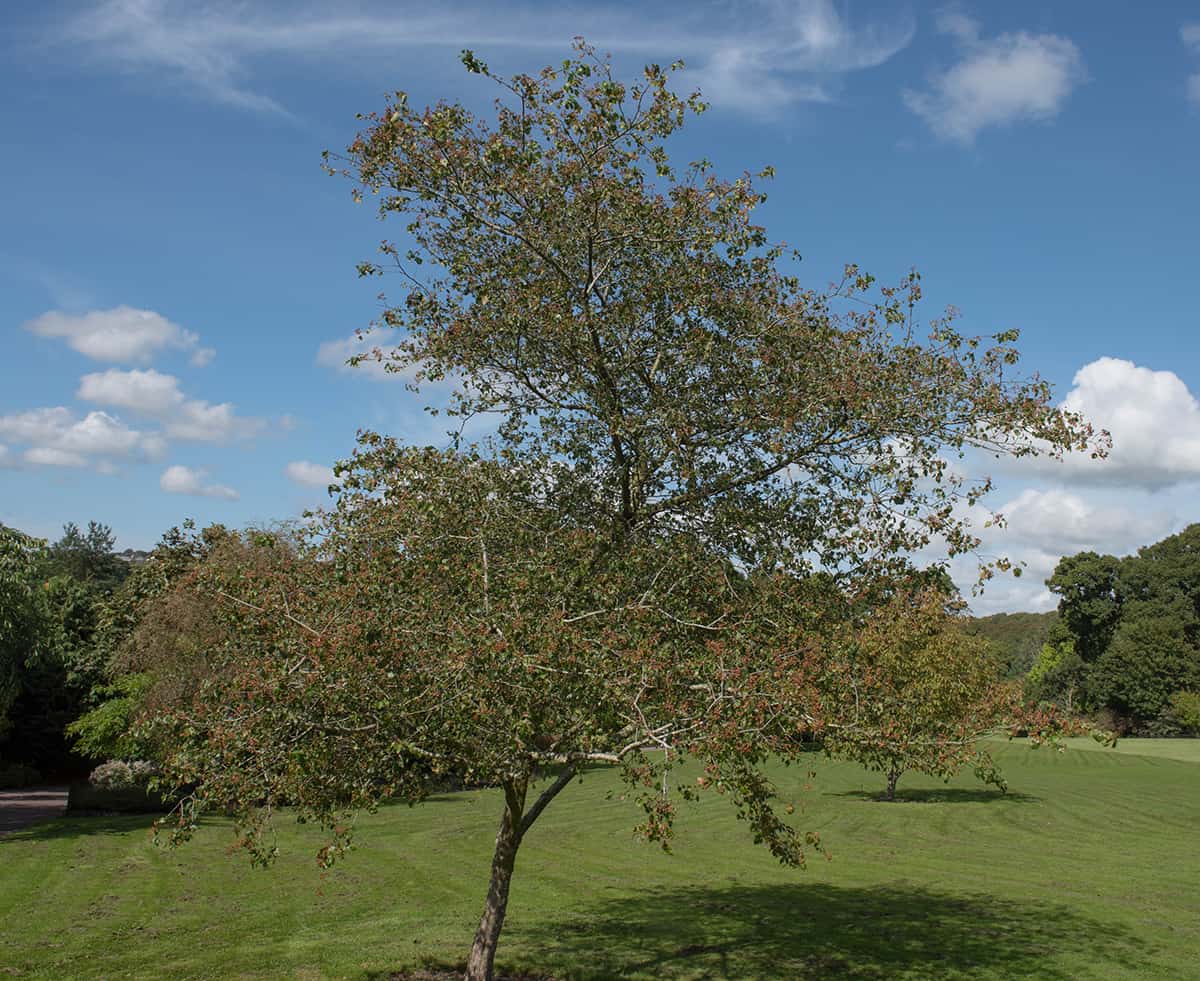
The Washington Hawthorn (Crataegus phaenopyrum) can grow up to 30 feet tall and develops dense clusters of white flowers in late spring.
You’ll recognize it by its small, shiny, red berries, which persist into winter, providing food for birds. The thorns on this species can reach 1 to 3 inches long.
Cockspur Hawthorn
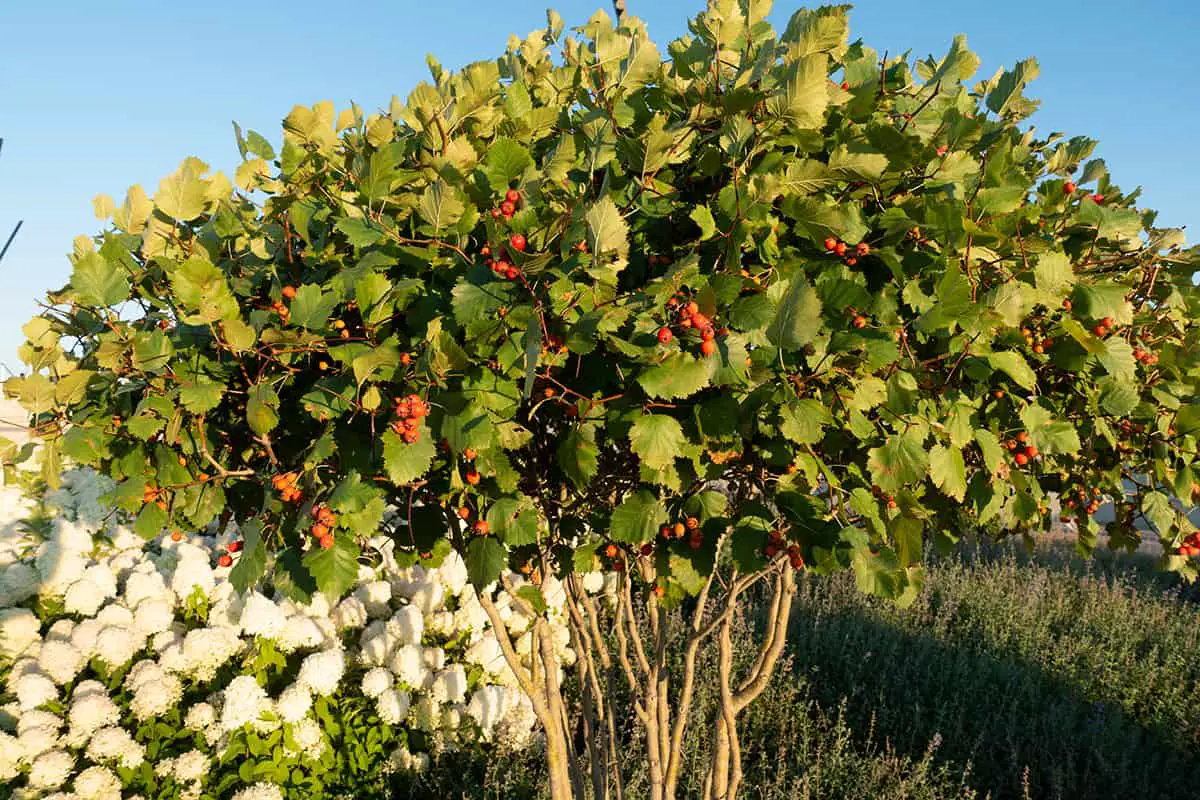
Cockspur Hawthorn (Crataegus crus-galli) is noted for its horizontal branches and substantial, solitary thorns that can grow up 2 to 4 inches.
The Cockspur Hawthorn typically grows between 20 to 30 feet in height. Its flowers are also white and bloom slightly earlier than the Washington Hawthorn. The dark red berries and thick foliage are a haven for wildlife.
Honey Locust
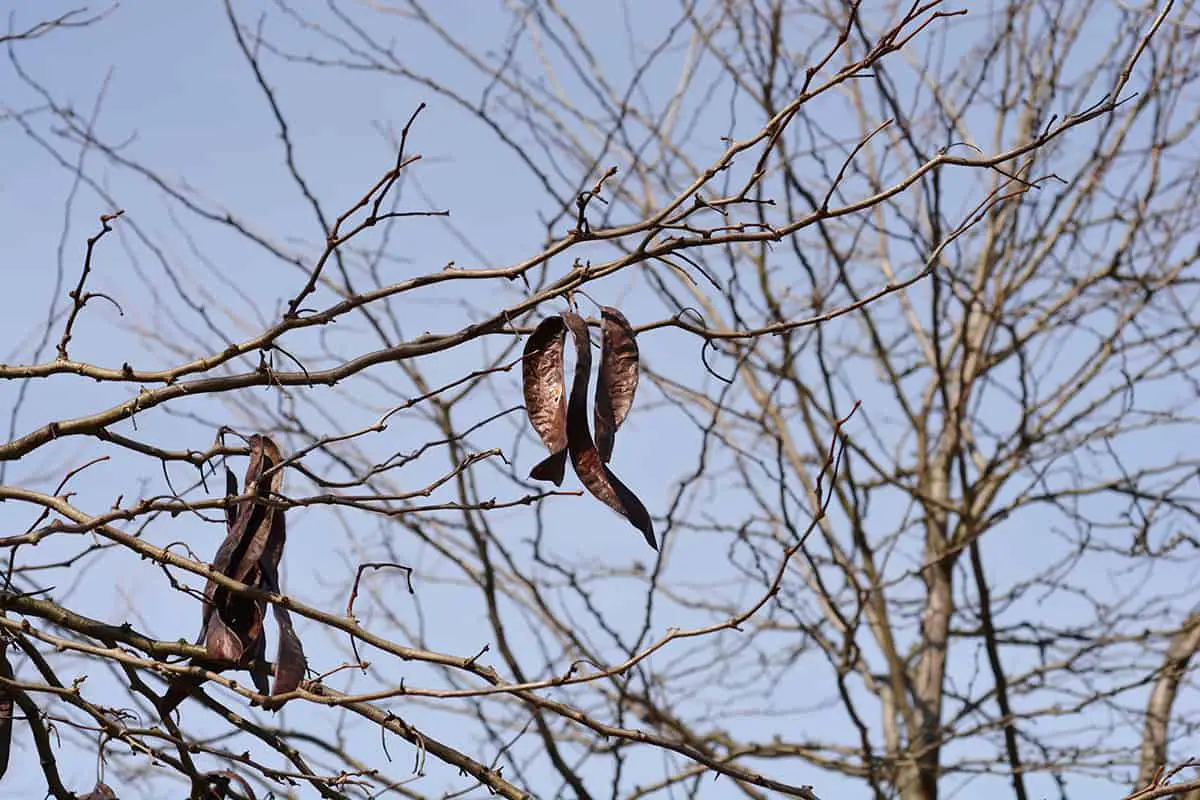
The Honey Locust (Gleditsia triacanthos) is a fast-growing, deciduous tree that can reach heights of 25 meters. Its trunk and branches are protected by an armor of long, strong spines. Honey Locust trees are drought-tolerant and can adapt to various soil conditions. Here are some key features:
- Thorns: Long, branched spines up to 4 inches in length.
- Flowers: Greenish-white, fragrant, and small.
- Leaves: Compound, with small leaflets on each branch.
You should exercise caution around Honey Locust trees due to their large thorns, which may be hazardous if not handled properly. Despite the thorns, the Honey Locust remains a popular choice for landscaping because of its adaptability and attractive appearance.
Black Locust
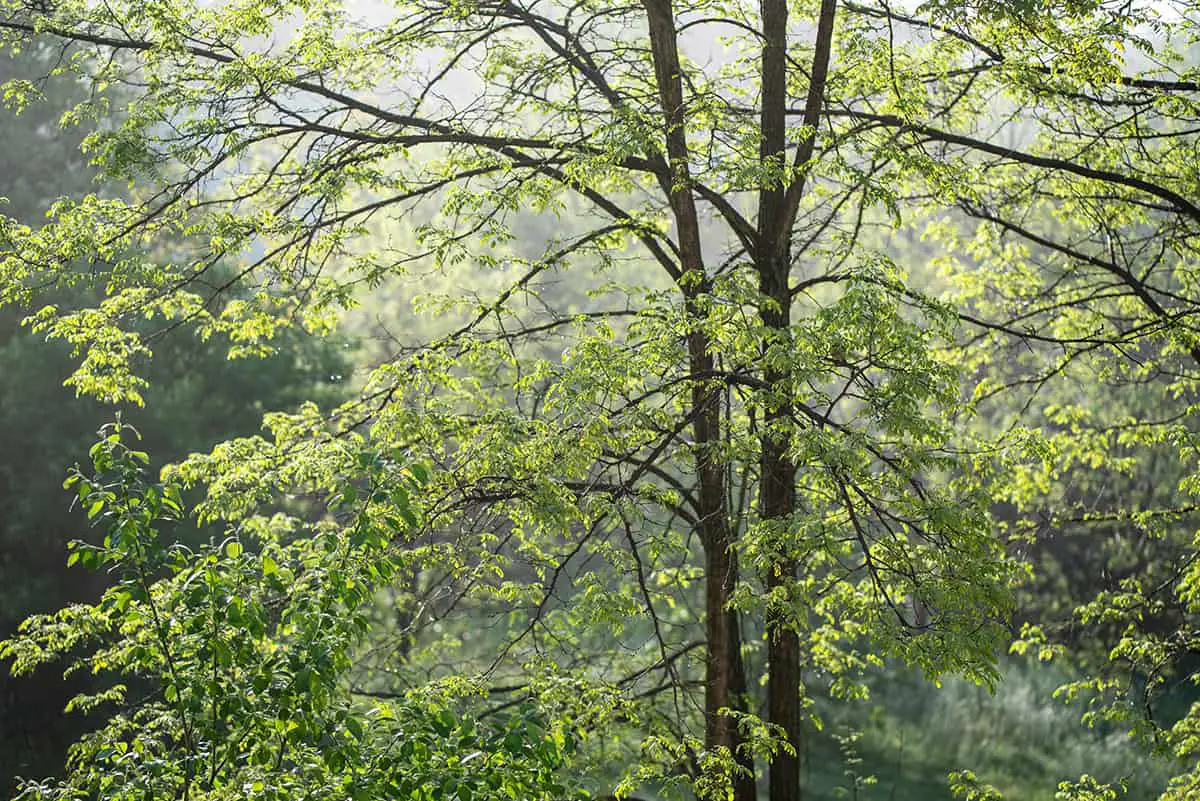
The Black Locust (Robinia pseudoacacia) is a tree you’ll recognize by its paired thorns, which often grow at the base of each leaf. A native of the southeastern United States, this deciduous tree can reach heights of 40 to 100 feet. It possesses a rapid growth rate and serves various purposes.
- Thorns: Short, paired, and located at the base of leaves.
- Flowers: White, fragrant, and hanging in long clusters.
- Leaves: Compound, with 7 to 21 oval leaflets.
The wood of the Black Locust is extremely hard and resistant to rot. You may find it used in furniture-making and as fence posts. It’s also a boon for environmental sustainability, used for the reclamation of disturbed areas.
The tree is considered invasive in some areas outside its native range due to its aggressive growth and ability to outcompete native flora. Its leaves, bark, and seeds are toxic to humans and livestock when ingested. Always consult with local guidelines before planting.
Balanites Aegyptiaca
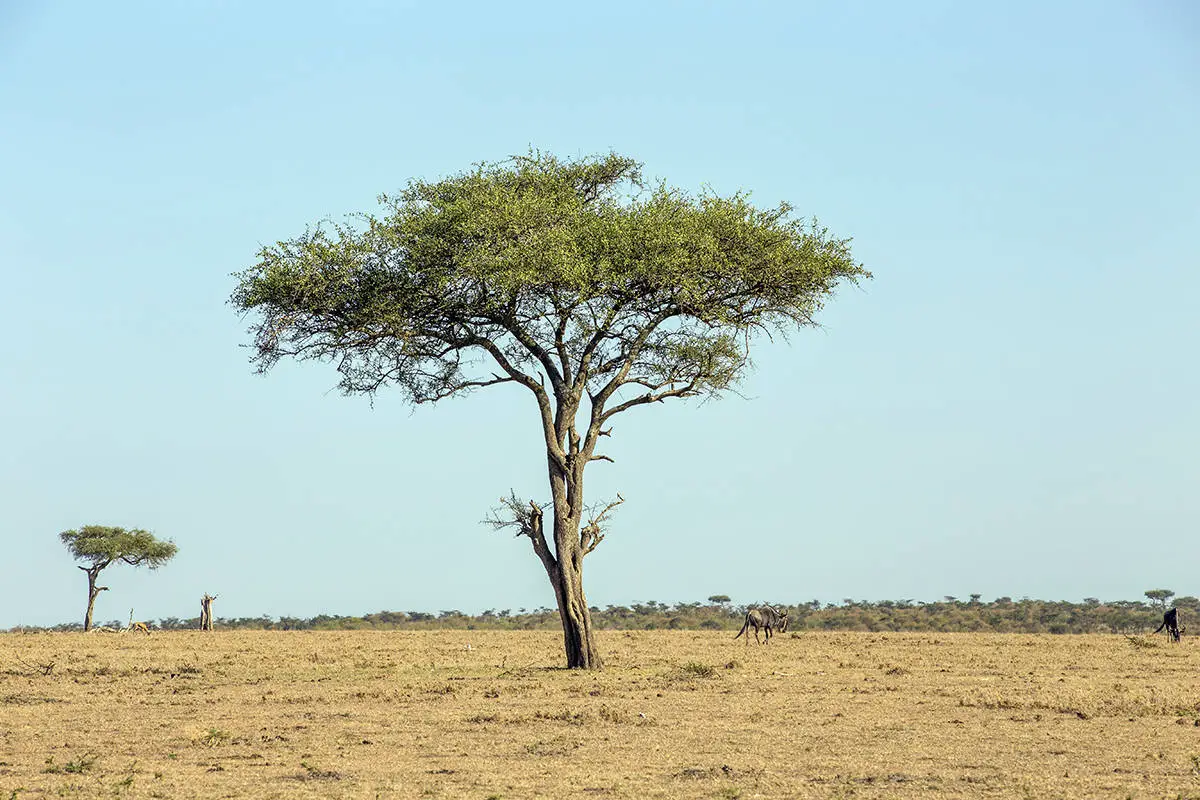
Balanites aegyptiaca, commonly known as the Desert Date, is a thorny, multi-purpose tree species indigenous to the African savannah and parts of the Middle East. Its ability to thrive in arid environments makes it a remarkable specimen in challenging climates.
Characteristics:
- Height: Ranges from 5 to 10 meters.
- Leaves: Small, green, and sprout in pairs.
- Thorns: Sharp, robust, usually found at the base of each leaf.
- Fruit: Yellowish when ripe, resembling dates.
When handling the Desert Date, it is advisable to wear protective clothing due to its thorny nature. Proper care and knowledge about this tree can lead to sustainable use of its multiple benefits, keeping in mind its importance to local ecosystems and communities.
Olea Dioica
Olea dioica, commonly known as Rose Sandalwood, is a medium-sized evergreen tree that you may find in the tropical forests of India. It is known for its hardwood and, notably, its thorny presence. When identifying this tree, look for its distinctive red berries and narrow lanceolate leaves, a key feature you can use to distinguish it from other Olea species.
The tree possesses small, white flowers that are fragrant and appear in clusters. These flowers develop into fruits that are elongated drupes, usually reddish when ripe. They are an important food source for birds and wildlife in the tree’s native habitat.
Characteristics:
- Height: Typically reaches 3 to 5 meters.
- Leaves: Narrow, lanceolate, and glossy with a leathery texture.
- Thorns: Sharp and pointed, serving as a defense mechanism against herbivores.
- Flowers: White and fragrant, blooming in small clusters.
- Fruit: Reddish berry-like drupes; a food source for birds.
Common Holly
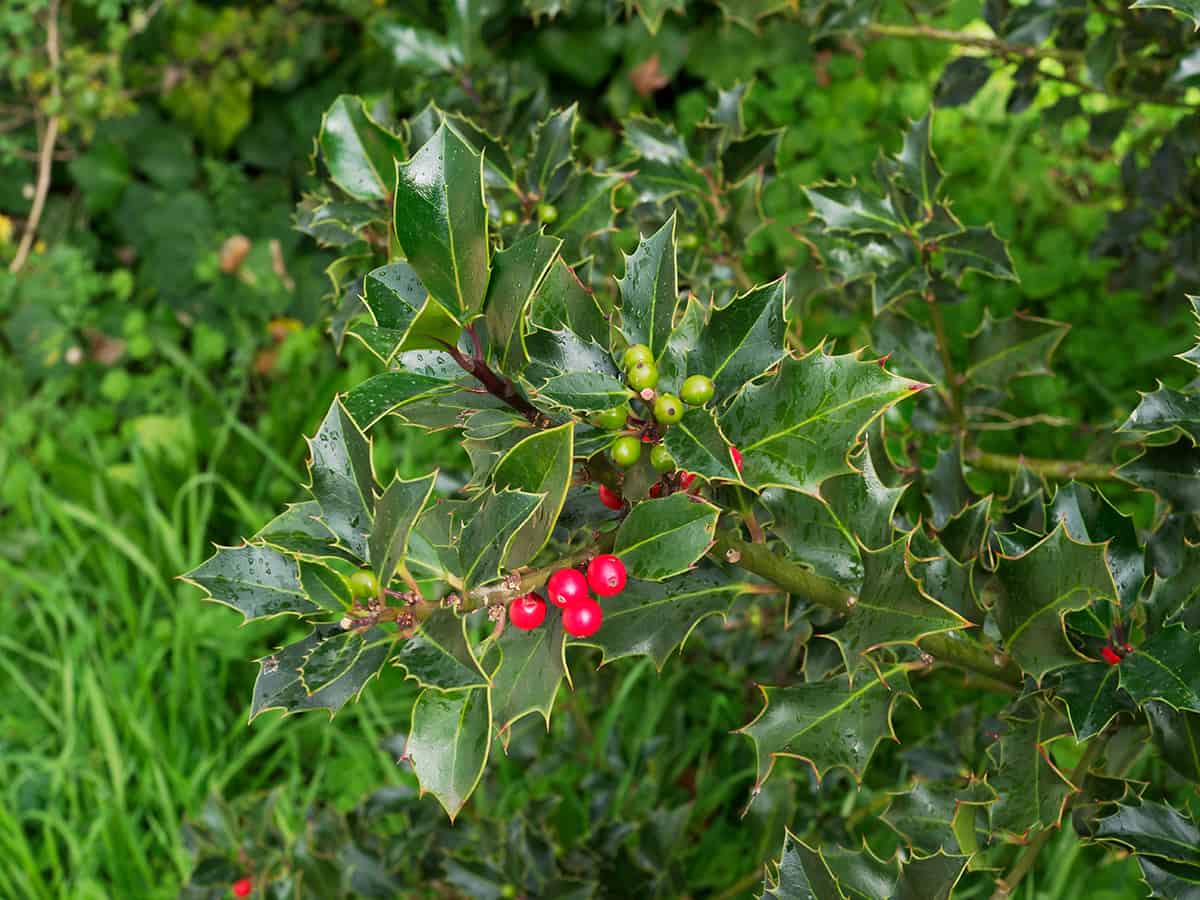
Common holly, or Ilex aquifolium, is a tree species recognized by its glossy, dark green leaves with a spiky edge and the bright red berries it produces. When you’re identifying this tree, you’ll note that its leaves are stiff with a leathery texture, and can be prickly to the touch due to the small thorns at the leaf margins.
Despite its somewhat unfriendly thorns, the holly is often associated with Christmas and is widely used in festive decorations. If you own pets or small children, exercise caution as holly berries, although alluring, are toxic when ingested.
Characteristics
- Height: Grows to 10-15 meters (33-49 feet)
- Leaves: Dark green, glossy, 5-12 cm long and 2-6 cm wide
- Berries: Bright red, about 6-10 mm in diameter
In your garden, common holly can serve as a protective barrier due to its dense, thorny foliage. It thrives in well-drained soil, with partial to full sun exposure, and is tolerant of a wide range of soil conditions.
Acacia

Acacia trees are a prominent feature of arid and semi-arid regions across the globe. These trees are recognized for their sharp thorns, which serve as a defense mechanism against herbivores. This type of tree with thorns prefers well-drained, sandy soil and thrives in hot, sunny environments.
Some notable species of Acacia include
- Acacia tortilis, Also known as the Umbrella Thorn Acacia, recognized by its distinctive canopy and long, paired spines.
- Acacia nilotica: Commonly known as the Gum Arabic Tree, it has brownish-black thorny branches.
Characteristics:
- Shape: The thorns can be straight or hooked, varying in length.
- Purpose: They discourage animals from grazing and protect the tree.
Palo Verde Tree
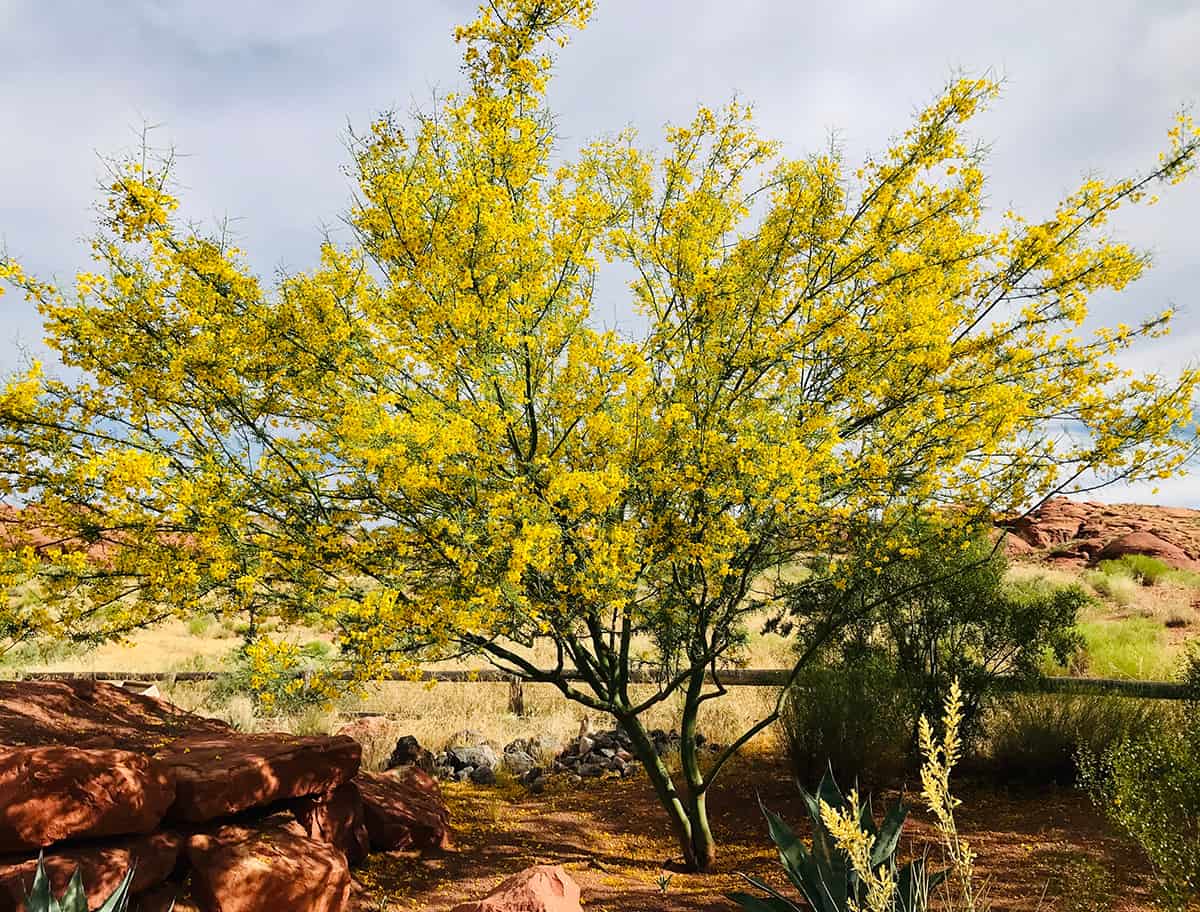
The Palo Verde Tree, specifically belonging to the genus Parkinsonia, is notable for its green bark and thorny branches. This characteristic enables photosynthesis even when leaves are scarce, typically during drought conditions.
You can identify this plant by looking for greenish branches and stems, which perform photosynthesis. Also, observe small, bright yellow flowers that bloom in the spring.
Common Varieties:
- Parkinsonia aculeata – The Mexican Palo Verde.
- Parkinsonia florida – The Blue Palo Verde.
- Parkinsonia microphylla – The Foothill Palo Verde.
Sandbox Tree
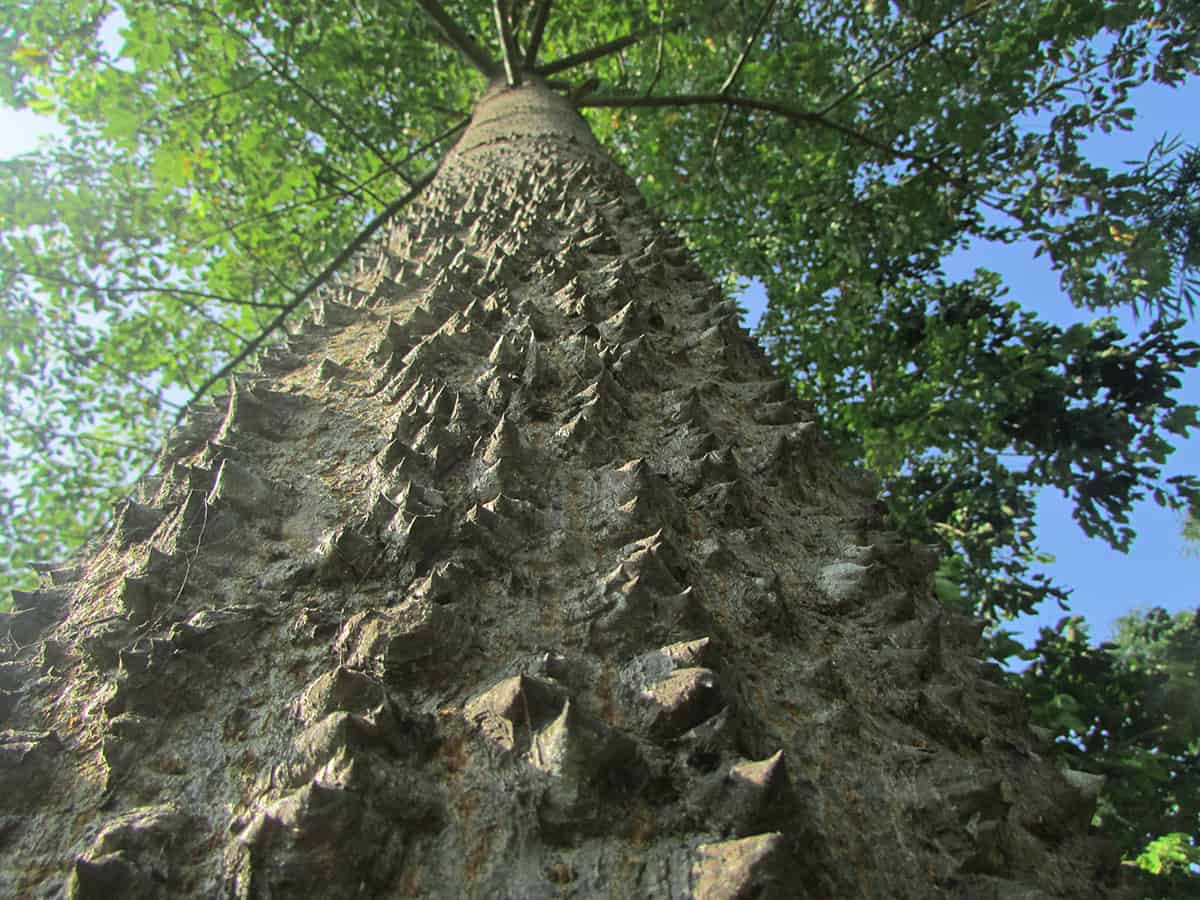
The Sandbox Tree, also known as Hura crepitans, is a large tropical tree notorious for its numerous thorns. You’ll find it native to the Amazon Rainforest and other tropical regions of North and South America. With a significant presence, the Sandbox Tree can grow up to 60 meters tall and its trunk can span 1 meter in diameter.
Characteristics:
- Thorns: Spiky bark containing thick conical thorns
- Flowers: This species has separate male and female flowers. The male flowers form long catkins.
- Fruits: The brown, pumpkin-shaped fruits have earned the tree the nickname “dynamite tree.” The fruits explode loudly as they mature, scattering seeds at high speed over considerable distances.
Devil’s Walking Stick
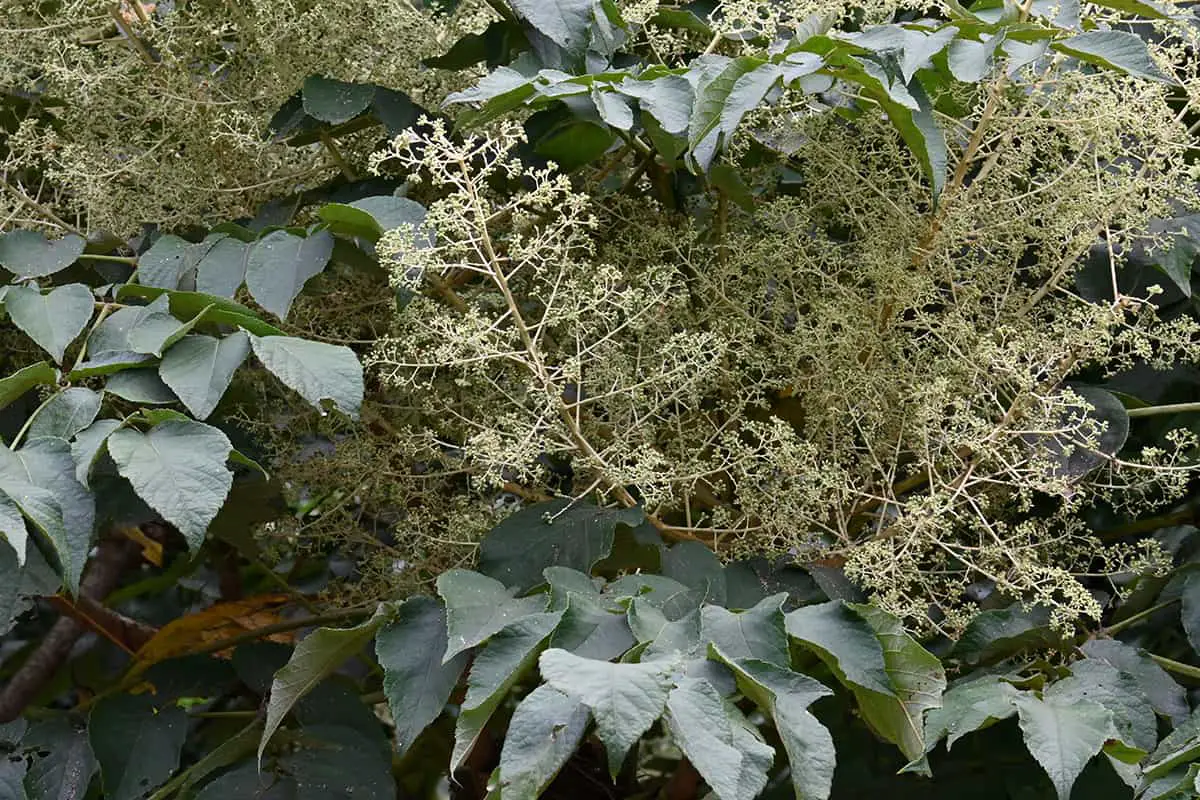
The Devil’s Walking Stick, scientifically known as Aralia Spinosa, is a distinctive species of tree notable for its formidable thorns. Native to the eastern United States, this tree thrives in woods and forest margins. The thorns, which serve as a defense mechanism, are not only present on the branches but also line the tree’s trunk.
Characteristics:
- Height: Can grow up to 35 feet tall.
- Leaves: Large, bipinnate leaves up to 4 feet long.
- Thorns: Sharp, spiny protrusions covering the trunk and branches.
- Flowers: Small, white blooms arranged in large, compound umbels.
- Fruit: Dark purple to blackberries; favored by birds
Kapok
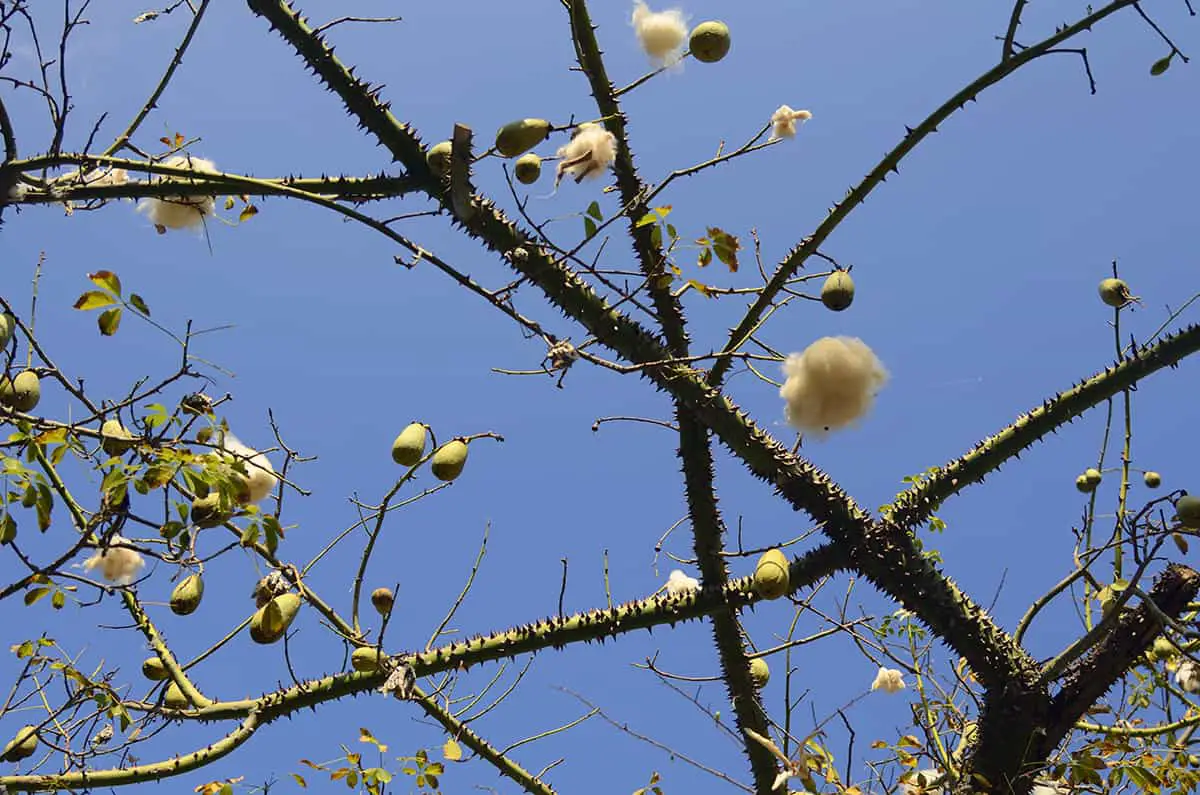
The Kapok tree, scientifically named Ceiba pentandra, is notable for its impressive presence and spiny trunk. It’s native to Mexico, Central America, the Caribbean, and northern parts of South America but can also be found in tropical regions across the globe due to its cultivation. You’ll recognize the Kapok by its towering height, which can reach up to 70 meters (230 feet), and its substantial buttress roots that provide stability and nutrient absorption.
Characteristics:
- Height: Up to 70 m (230 ft)
- Leaves: Palmate, 5-9 leaflets
- Flowers: White or pink, nocturnal, pollinated by bats
- Thorns: Spiny trunk and branches provide protection
Kapok is also known for its significant role in local ecosystems and economies. Its flowers bloom at night and are adapted for pollination by bats, which furthers plant reproduction and supports local fauna. Furthermore, the tree’s fibers, also known as kapok, are harvested for various uses such as stuffing for mattresses, pillows, and insulation due to their lightweight and buoyant nature.
Mesquite
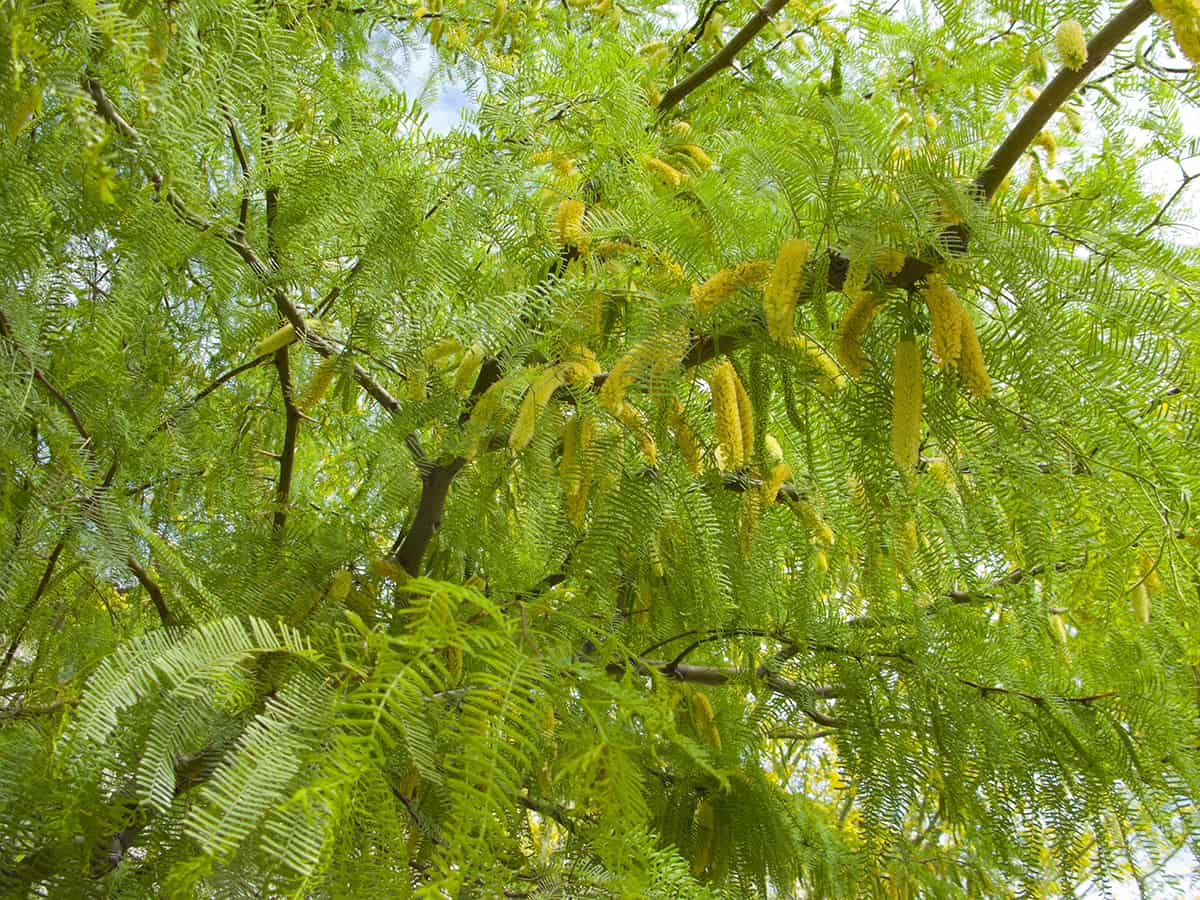
Mesquite trees, belonging to the genus Prosopis, are well-known for their hardiness in arid environments. These deciduous trees are distinguished by their long, sharp thorns, which can grow up to 2 inches in length.
You can find mesquite trees in parts of the United States such as Texas and Arizona, as well as in Mexico and South America.
Characteristics:
- Leaves: Feather-like (bi-pinnate) foliage that helps conserve water.
- Thorns: Each branch holds multiple thorns; these act as a defense mechanism.
- Bark: Typically rough, with a gray to dark brown appearance.
Utilization and Cultural Significance
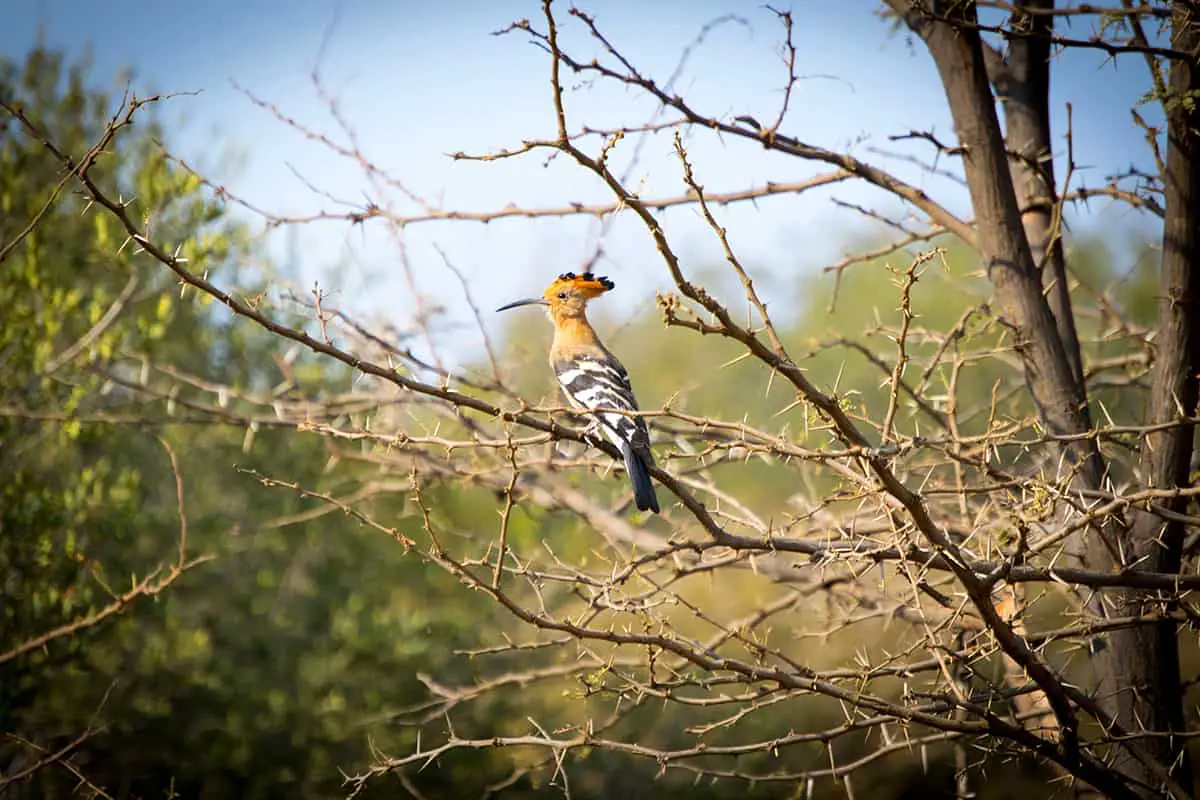
Furniture and Craftsmanship
You might find it interesting that thorny trees have a variety of uses, particularly in furniture making and craftsmanship. Some species, like Acacia erioloba, are valued for their dense wood, which makes them ideal for carving and creating furniture. Besides, their unique, elegant appearance adds a distinct touch.
Thorny Trees to Look For:
- Acacia erioloba or Camelthorn: used in furniture, wooden sculptures, and kitchen utensils.
- Gleditsia triacanthos or Honey locust: employed in making furniture, flooring, and fence posts.
Symbolism and Folklore
Thorny trees don’t just have practical applications; they hold cultural significance too. Various cultures and traditions use these trees and their thorns as symbols representing diverse meanings. In some cases, they’re seen as protectors against negative energy or used in spiritual rituals.
Key Symbolism and Associations:
- Hawthorn: associated with protection and overcoming adversity, commonly linked to Celtic mythology.
- Acacia: symbolizes strength and resilience, often found in Egyptian, Hebrew, and Christian texts.
Keep in mind the cultural importance and practical applications of thorny trees as you explore them in nature or incorporate them into your life.
Conservation and Environmental Considerations
Trees with thorns play a vital role in maintaining biodiversity. As a result, conservation and environmental considerations are critical. In this section, you will learn about the issues surrounding these types of trees.
Thorny trees, such as Acacia karroo and species found in African savannahs, support a wide range of wildlife and ecosystems. Their unique characteristics provide shelter and food for many bird, insect, and mammal species. Many of these species coexist with thorny trees in protected areas.
Some key points to consider when aiming for the conservation of thorny trees include:
- Habitat loss: Loss of natural habitats due to human activities threatens the survival of thorny trees.
- Climate change: Changes in temperature and precipitation patterns may impact thorny tree growth and distribution.
- Invasive species: Non-native plants and animals may damage or compete for resources with native thorny tree species.
Understanding the interactions between trees, animals, and their environment can lead to better conservation strategies. For instance, studies in Senegal investigate local perceptions of vegetation changes to prioritize woody-savanna tree conservation in protected areas.
By taking these factors into account, you can play a role in preserving the unique thorny tree species and their surrounding ecosystems.
